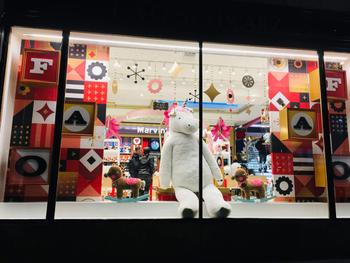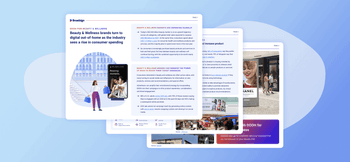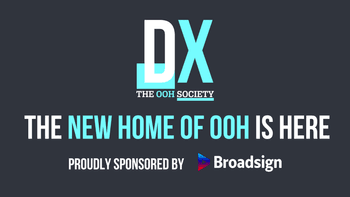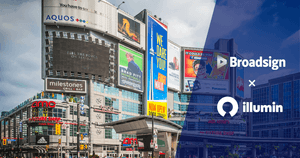While it seems like summer has gone by in the blink of an eye, September marks the start of the back-to-school season, which could only mean one thing: the holidays are fast approaching. With Black Friday marking the unofficial start of the biggest retail season of the year, advertisers and retail marketers are preparing for their busiest and most profitable quarter.
Like the 2022 holiday season, consumers plan to start their holiday shopping earlier this year, with over half of U.S. consumers expected to start making purchases before November. And despite the ongoing inflation and continuing economic challenges, the 2023 holiday season is moving full steam ahead, meaning advertisers and retailers shouldn’t wait to start their media strategy. For marketers looking to capitalize on key selling opportunities this season, digital out-of-home (DOOH) can perfectly complement your omnichannel campaign by helping boost awareness and purchase consideration and drive foot traffic to brick-and-mortar or online retailers. Thanks to programmatic digital out-of-home (pDOOH) advancements, holiday retail campaigns are easier to activate than ever, making it the most wonderful time of the year for advertisers and consumers alike.
Ho-Ho-How much does this cost?
While no one can predict exactly how the 2023 holiday season will shape up, one thing is certain: consumers will continue to be more deliberate with their spending. That’s not to say they’ll be tucking away their wallets, though. According to the National Retail Federation (NRF), retail sales during 2022’s holiday season grew 5.3% year-over-year to $936.3 billion. And despite tighter budgets, 46% spent more on Black Friday in 2022 than in 2021. Bottom line: consumers are still willing to spend on holiday shopping; however, they’ll prioritize deals and savings and spend more time researching their purchases before checking out.
Inventory availability and shipping times are also factors that consumers will be paying attention to this year. After product shortages that left many shelves bare during the 2020 and 2021 seasons, 2022 saw retailers overstock with more inventory than they could clear, thanks to consumers’ inflation worries. This year, Supply Chain Dive reports that retailers will learn to live on leaner inventory levels and “prioritize cost control and margin protection over the risk of lost sales.”
What does all this mean for marketers? With consumer spending caution and less inventory than last year, holiday shoppers will experience a shift in buying behaviour, leading to a willingness to try new brands or retailers that can better meet their needs. In turn, advertisers must focus on communicating value via their marketing strategies to prevent previous brand loyalists from switching to cheaper or more available options.
Leverage programmatic DOOH to drive brand awareness
In a 2022 survey by Klarna, 42% of shoppers planned to purchase gifts earlier than usual, with 69% starting before Black Friday. With consumers researching and shopping earlier than ever, OOH can be a great way to capture attention in the months leading up to the holidays, especially with recent data finding that 88% of U.S. adults notice OOH ads. There are several ways advertisers can take advantage of programmatic DOOH capabilities to activate impactful OOH campaigns ahead of the holiday season, reaching desired audiences throughout their daily journey.
Contextual OOH ads have been proven to capture audience attention, and pDOOH technology makes it possible to deliver data-driven ads in the physical world based on your target audience’s movements throughout the day. Advertisers can drive brand awareness by placing ads in key locations while consumers commute, run errands, eat out, and more. Depending on your target audience, certain venue types can be more impactful in reaching key demographics. A brand looking to target department store shoppers, primarily women in the 55-64 age, might want to consider activating OOH ads around retail locations like shopping centers and big-box stores or close to health and point-of-care facilities. Leveraging dayparting can also help ensure your OOH ads are seen where and when they matter by activating ads in high-traffic, high-visibility areas during certain times. For example, advertisers targeting parents with young children can maximize reach by delivering OOH ads near retailers or entertainment centres on weekends when families are out and about.
Promote sales and special offers with OOH messaging
According to Google’s 2023 Retail Guide, 72% of consumers are more thoughtful about their spending, and 62% are more mindful about where they shop this year. Holiday shoppers looking to save money will turn to OOH ads for information on deals and special offers that resonate with them as they try to save money this holiday season. A recent study by the OAAA and Morning Consult found that 42% of U.S. adults say OOH ads with special offer messaging like “buy one get one free,” discount or promo codes, and free shipping have the most influence on how much they purchase in-store.
Adapting messaging based on promotions or data can ensure that ads remain contextually relevant as consumers shop for the best deals. Programmatic DOOH makes it possible to trigger real-world ads based on real-time data like weather, time of day, financial data, and more. Brands and retailers offering ski and hockey equipment might choose to trigger more ads when the temperatures drop, for example. Ads can be activated or paused based on current promotions, and campaigns can be adjusted based on consumer interests and shopping habits. A retailer with too much inventory in one location can quickly switch OOH ads from one geographic area to another, delivering promotional messaging that encourages audiences to head in-store.
Drive foot traffic and in-store purchases
OOH advertising can be one of the most effective ways to drive traffic to retailers. By placing ads throughout retail trade areas, OOH activations can act as a last-mile push to get consumers in-store. 68% of adults notice OOH ads on their way to a store, and nearly half say the ads impact their in-store purchase decisions, according to the OAAA.
By placing OOH ads along the consumer path-to-purchase, brands and retailers can drive awareness and boost foot traffic with high-impact proximity targeting, delivering tailored, location-specific messaging. High-traffic, high-visibility venue types like billboards, urban panels, and transit and street furniture en route to retailers can be leveraged to provide key information like directions to a nearby retail location or special in-store promotions. Long dwell-time environments, including shopping malls, casual dining and resto-bars, and entertainment or sports complexes, can also be a great way to target priority markets. In-store or point-of-purchase (POP) displays present another great opportunity to leverage OOH as a last-minute sales push, with 75% of adult shoppers noticing OOH messaging once inside a store.
Brands and retailers can use programmatic DOOH technology to increase flexibility when determining and modifying campaign parameters. Ads promoting time-sensitive in-store offers can be optimized based on location, allowing advertisers to pause or play ads near certain retailers depending on product availability, promotions, and time of day. OOH displays can even be placed around competitors’ locations, switching messaging based on competing offers.
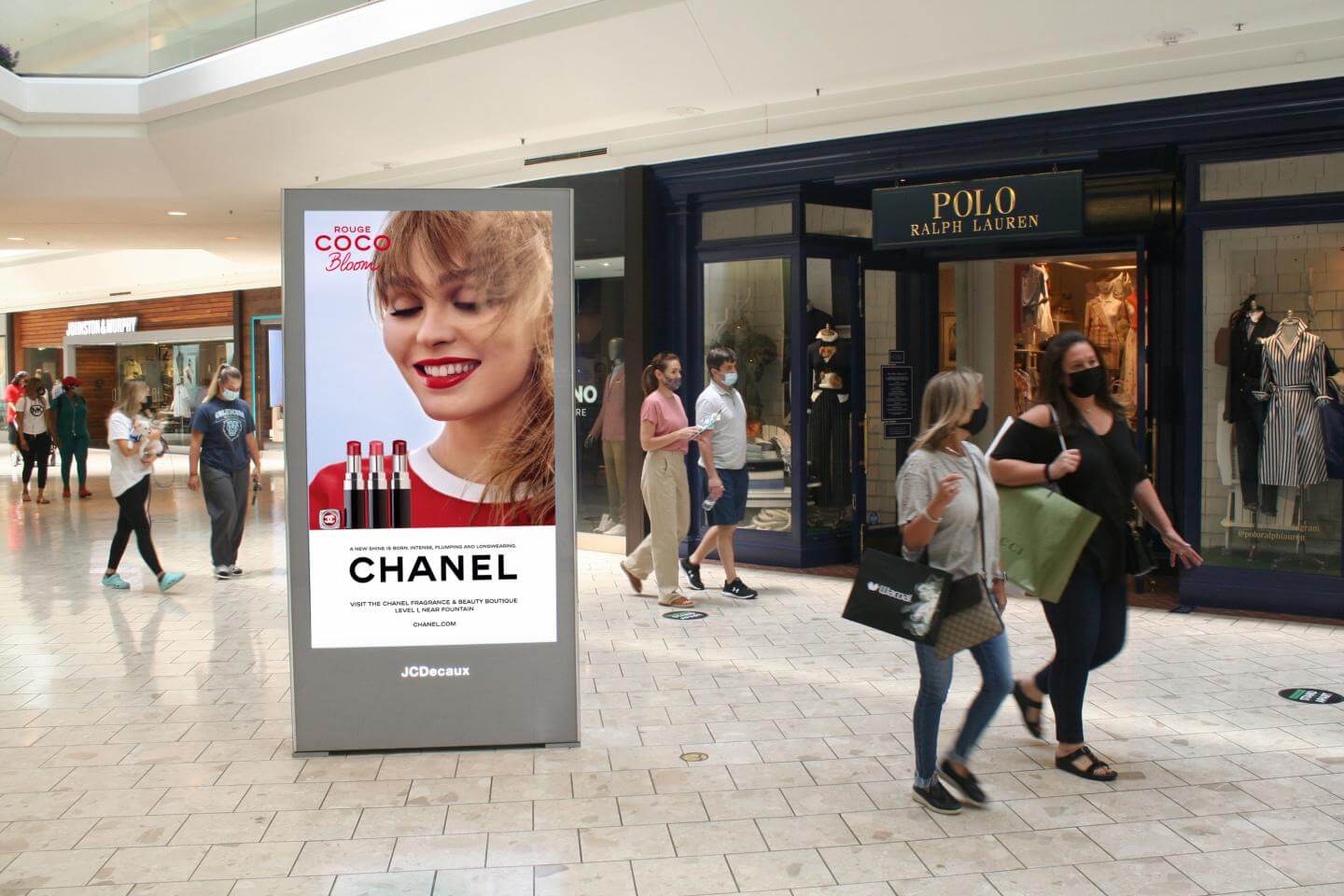
Extend the reach of your omnichannel campaigns
With consumers spending more time researching products and services before purchasing, developing a strong omnichannel strategy should be at the top of every advertiser’s list this holiday season. According to Google’s 2023 Retail Guide, over 40% of shoppers use Google for researching an online or in-store purchase, with online research remaining a key resource in the consumer shopping journey. From online to in-store, a seamless brand experience is necessary to stick out amongst all the competition. Fortunately, OOH can help boost brand engagement across digital and offline channels by blending messaging and using each medium to complement the other.
Incorporating interactive elements into OOH messaging can be a great way to encourage action online, like visiting a website, searching for more information, or interacting with your brand’s social media profile. QR codes, hashtags, or short URLs can capture audience attention and boost engagement in a fun, frictionless way. For example, a watch and accessories brand offering an online discount might want to consider incorporating QR codes into their OOH ads and running them in transit hubs during commuting hours where they’re sure to reach business professionals. Through device ID passback, audiences exposed to DOOH ads in a geofenced area can be retargeted via mobile and digital ads, increasing brand touchpoints throughout their journey.
As the holiday season quickly approaches, there’s no better time to get started with out-of-home advertising to reach your target audience. With economic influences and more extended purchasing periods, consumers will seek information on deals and value-driven offers wherever possible. From driving awareness to lifting in-store traffic, integrating pDOOH into your broader omnichannel campaign is a strategic play that will ensure your brand makes the nice list this year.
Want to build an impactful retail OOH campaign this holiday season?
Explore our curated audiences, inventory, and contextual locations in our Retail Package!
